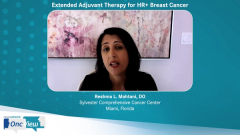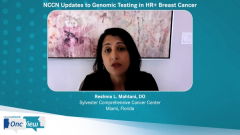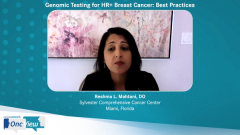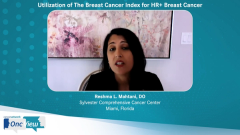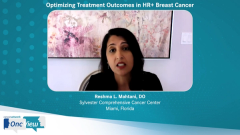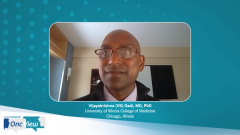
Improving the Management of HR+ Breast Cancer: Next Steps
Insights into ongoing unmet needs in the individualized management of HR+ breast cancer and thoughts regarding future directions.
Episodes in this series

Kristie Kahl: What are some unmet needs in the treatment of early stage hormone receptor breast cancer, and what are we doing to negate those?
Vijayakrishna Gadi, MD, PhD: Focus on this concept of antiestrogen therapy and making it better. We need better drugs. There are novel antiestrogens that are being developed. As those find their way into metastatic cancer, hopefully they will migrate into early stage cancer, and we’ll get a sense of how these novel antiestrogens work compared with what we already have. In addition, biologically, we are subsetting these patients with even more detail. Previously, we just knew about HER2 [human epidermal growth factor receptor 2], but now we’re learning that there are patients who might benefit from inhibition of CDK4/6 pathways and inhibition of PI3 kinase pathways. With time, those are going to filter down into early stage breast cancer, and we will have a better sense of that.
There is a lot happening in drug development and unmet needs around drug development. But in terms of diagnostics, it’s a little different. These studies are being done with these new drugs, but we still don’t have a good sense of who really benefits. I will highlight what happened recently with the CDK4/6 inhibitors in this adjuvant setting. We have 3 negative trials and 1 positive trial. The criticism is that 1 positive trial may actually turn negative if we follow those patients for longer, but all of us intuitively feel that there are patients who will benefit from this intensified, antiestrogen strategy after the early stage treatment. But we don’t have a test that tells us who that is, so having tests that tell us the high-risk pool and the responders vs the low-risk pool and the non-responders will be helpful in that context.
In the extended adjuvant setting, we tend to think of patients who have been on tamoxifen or an aromatase inhibitor and who may benefit from extending. But for our highest-risk patients, whether they received a drug like a CDK4/6 inhibitor, or for patients who are very young, who are treated with ovarian suppression therapy alongside their antiestrogen therapy, those women are still at risk after 5 years. It would be helpful to know where we can ease off what we’re doing in terms of all therapy, or just the ovarian suppression piece of it, vs continuing on. Those are all unknowns, and those are the patients I struggle with the most.
There is also this other unmet need that’s hard to get my head around. I have to think about it a lot at night, which is patients for whom we know that the risk is a little higher than what we would like to see in that fifth year and beyond. Unfortunately, the test predicts no benefit from therapy. So, for high risk, but no benefit, what do we do for those patients? How can we keep them out of harm’s way with recurrences? Those are the groupings with the testing for which there are still some unmet needs.
Kristie Kahl: Thank you so much, Dr Gadi. I hope you found this information to be valuable in your clinical practice. Thank you for watching CancerNetwork®’s OncView program from MJH Studios™.
Transcript edited for clarity.
Newsletter
Stay up to date on recent advances in the multidisciplinary approach to cancer.


